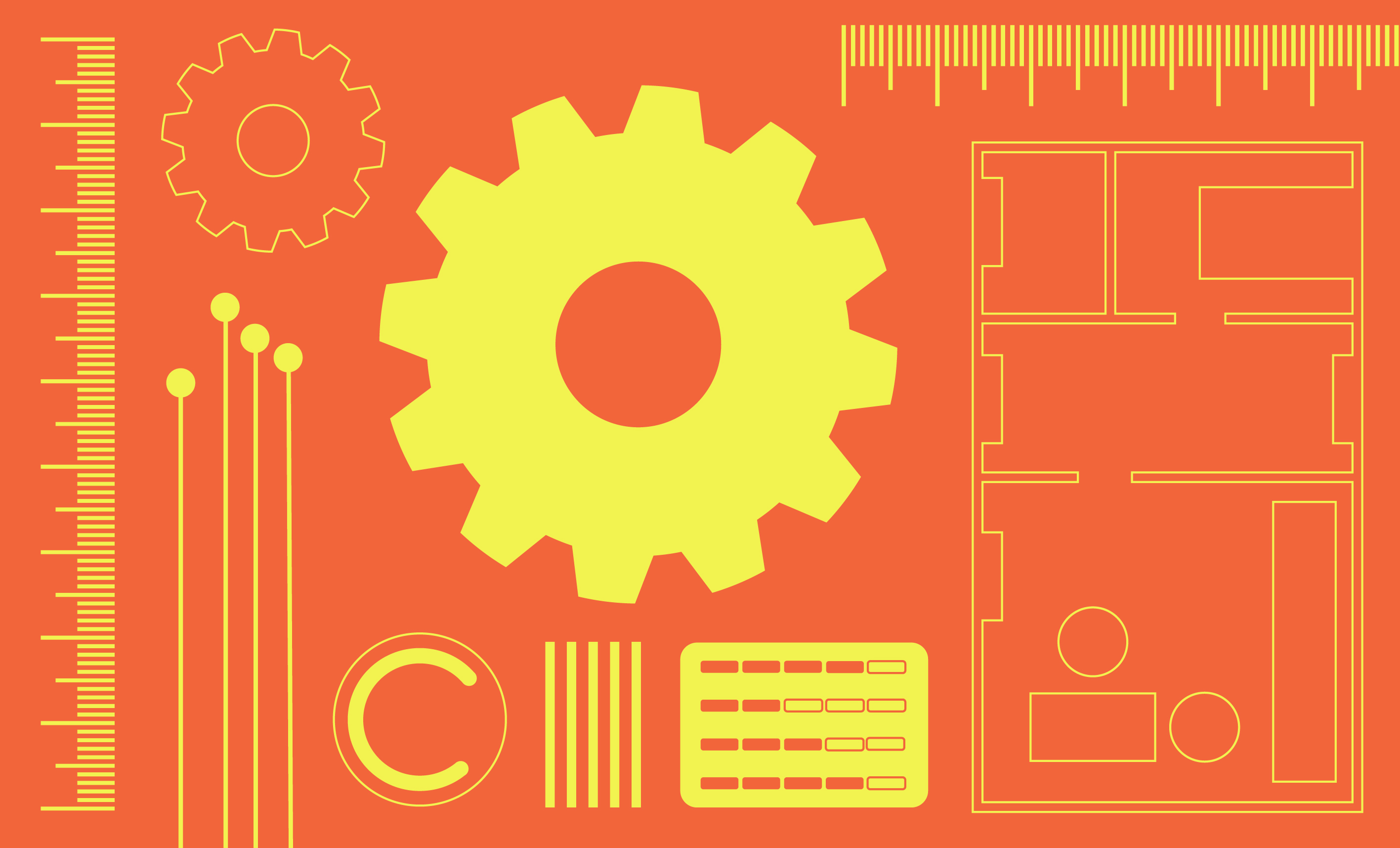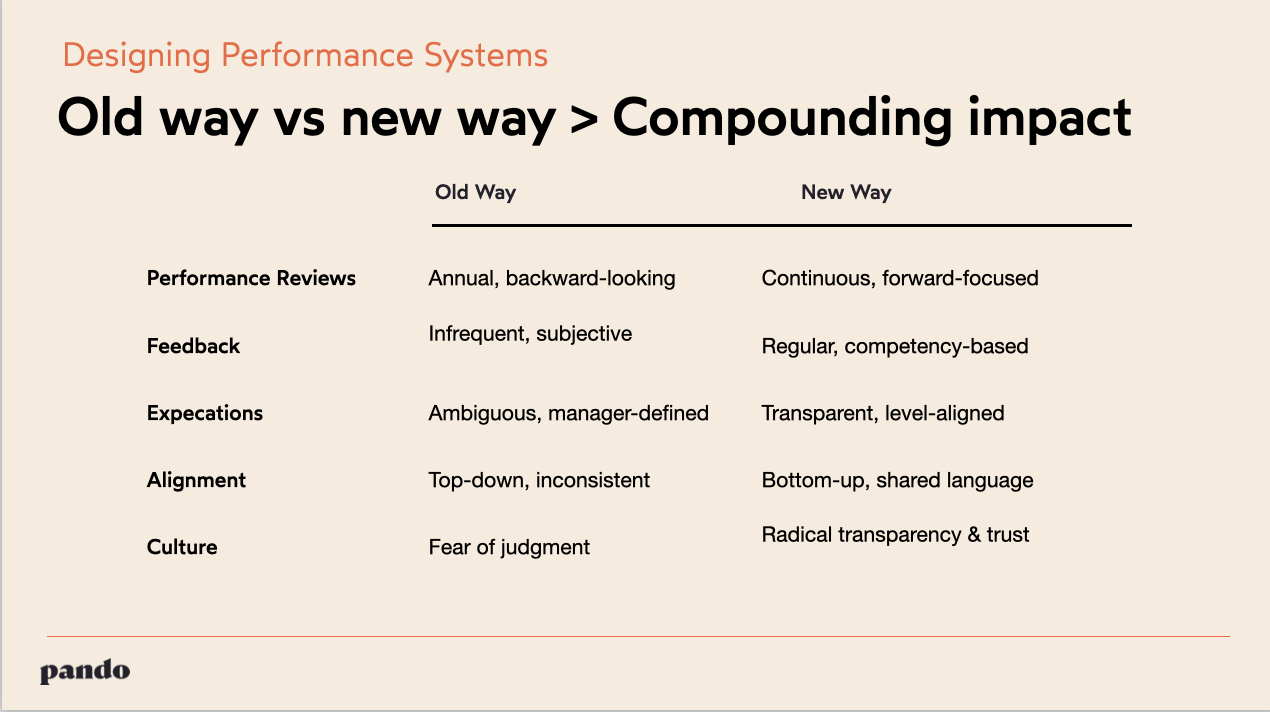
How the most agile People teams are using levels, competencies and small-batch assessments to drive always-on performance to drive lasting performance transformation.
Too often, calibration becomes a corporate ritual — an exhausting, top-down exercise meant to “ensure fairness,” but something that ends up reinforcing politics, inherent biases and ultimately eroding trust.
At Pando, we see calibration not a general-purpose tool that is leveraged for every performance review, but as a precision tool used sparingly and strategically to align your organization when it’s changing: new levels, new expectations, new leaders, or new growth.
When used intentionally, calibration builds trust and transparency. When overused, it breeds fatigue and doubt. The difference comes down to structure and transparency upfront which drives continuous alignment throughout the year requiring less "re-calibration" during performance reviews.
Before you even think about calibration, you need clarity. Adam Platcha, Pando’s Head of Customer Success, explains “You can’t calibrate chaos.” Every performance transformation begins with a clear and embedded structure — defining what good looks like through:
These elements create the foundation for continuous calibration — an ongoing, bottom-up process where alignment happens naturally, not through once-a-year debate sessions.

Calibration shouldn’t happen on a schedule — it should happen for a reason.
Adam calls this using calibration with purpose.
Use organizational calibration when you’re:
These are moments when the organization needs to re-tune, not re-rate. When done right, calibration increases trust and alignment, helping managers interpret performance consistently and fairly.

Transformation isn’t a one-time rollout — it’s an iterative process. Pando helps organizations move through stages of maturity:
“Performance transformation isn’t a project — it’s always on. The goalposts move as your company evolves.” - Adam Plachta, Head of Customer Success

Pando supports transformation both strategically and operationally.
By embedding structure, transparency, and ongoing feedback, Pando helps organizations move from reactive, top-down calibration to continuous, bottom-up alignment — where clarity and trust drive real performance growth. Request a demo of Pando to learn more.
Calibration isn’t about control — it’s about clarity. Calibration should be the bridge between structure and trust and something that is happening every day, not once a year. And when you need to do a full company-wide calibration process, that should be used sparingly to align new groups to new information or changes because that way, it’s one of the most powerful tools for accelerating both performance and culture.
👉 Watch the Recording of our recent webinar on Performance Calibration to explore how Pando helps organizations like yours design and scale modern performance systems.
